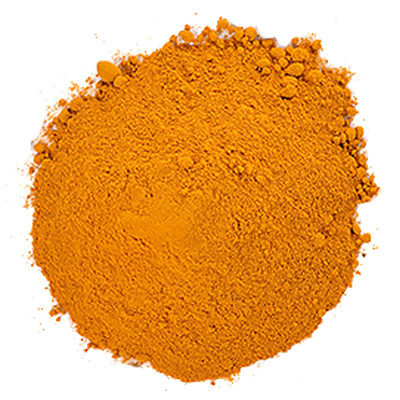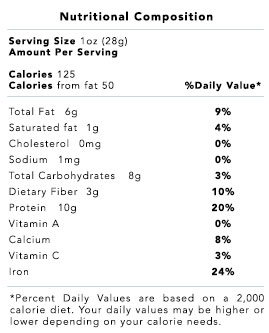
Scientific Name
Curcuma longa
Grade
Conventional
Form
Dried Powder

Scientific Name
Curcuma longa
Grade
Conventional
Form
Dried Powder

Facts
Turmeric is native to the sub-Himalayan mountain region and grown widely in many parts of the tropical and subtropical regions as an important commercial crop. The plant grows to a meter in height and features aromatic, miniature plantain-like leaves.
Turmeric root features dark brown skin on the exterior and deep orange-yellow flesh internally. Its leaves, as well as rhizome, feature a unique flavor and fragrance. Its taste is described as mildly peppery to warm and bitter while its fragrance is sweet and pleasant, slightly reminiscent of a mix of orange-zest and ginger to which it is related. Once harvested, the root is boiled, dried, and ground to prepare distinctive bright yellow spice powder.
Turmeric plants produce no seeds and only reproduce via their underground spreading rhizomes.
Turmeric roots as well as leaves have long been used in traditional Indian and Chinese medicines for their demonstrated anti-inflammatory (painkiller), anti-oxidant, and anti-cancer properties.
Preliminary Health Research
Turmeric is one of the most readily available and cheapest herbs that contain notable phyto-nutrients profile. At 1,59,277 µmol TE/100 g, its total-ORAC value or anti-oxidant strength is one of the highest among known herb and spice species.
Turmeric has been in use since antiquity for its anti-inflammatory (painkiller), carminative, anti-flatulent and anti-microbial properties.
The herb contains health benefiting essential oils such as termerone, curlone, curumene, cineole, and p-cymene.
Curcumin, a poly-phenolic compound in the root, is the principal pigment that imparts deep orange color to the turmeric. In vitro and in laboratory animal studies have suggested that the curcumin may have anti-tumor, antioxidant, anti-arthritic, anti-amyloid, anti-ischemic, and anti-inflammatory properties.
This popular herb contains no cholesterol; however, it is rich in anti-oxidants and dietary fiber, which helps to control blood LDL or "bad cholesterol" levels.
It is a very rich source of many essential vitamins such as pyridoxine (vitamin B6), choline, niacin, and riboflavin, etc. 100 g of the herb provides 1.80 mg or 138% of daily-recommended levels of pyridoxine. Pyridoxine is employed in the treatment of homocystinuria, sideroblastic anemia and radiation sickness. Niacin helps prevent "pellagra" or dermatitis.
Fresh root contains very good levels of Vitamin-C. 100 g of the root is composed of 23.9 mg of this vitamin. Vitamin C is a water-soluble vitamin and a powerful natural anti-oxidant, which helps the body develop immunity against infectious agents and remove harmful free oxygen radicals.
Turmeric contains very good amounts of minerals like calcium, iron, potassium, manganese, copper, zinc, and magnesium. Potassium is an important component of cell and body fluids that helps in controlling heart rate and blood pressure. Manganese is utilized by the human body as a co-factor for the antioxidant enzyme, superoxide dismutase. Iron is an important co-factor for cytochrome oxidase enzymes at cellular level metabolisms and required for red blood cell (RBC's) productions.
Just a few grams of turmeric per day either in the form of powder, crushed root, or fresh root can provide enough nutrients to help you prevent anemia, neuritis, memory disorders and offer protection against cancers, infectious diseases, high blood pressure, and strokes.
Use
Turmeric powder has been in use as a food colorant, natural food preservative, and flavor base since ancient times. It is traditionally recognized as "Indian saffron" since its deep yellow-orange color is quite similar to that of the prized saffron.
In order to keep the fragrance and flavor intact, it is generally added at the last moment in the cooking recipes since prolonged cooking would result in evaporation of its essential oils.
It is essential to be watchful while handling turmeric since its pigments can easily stain clothes and kitchen walls. To avoid a lasting stain, immediately wash any area with soap and water.